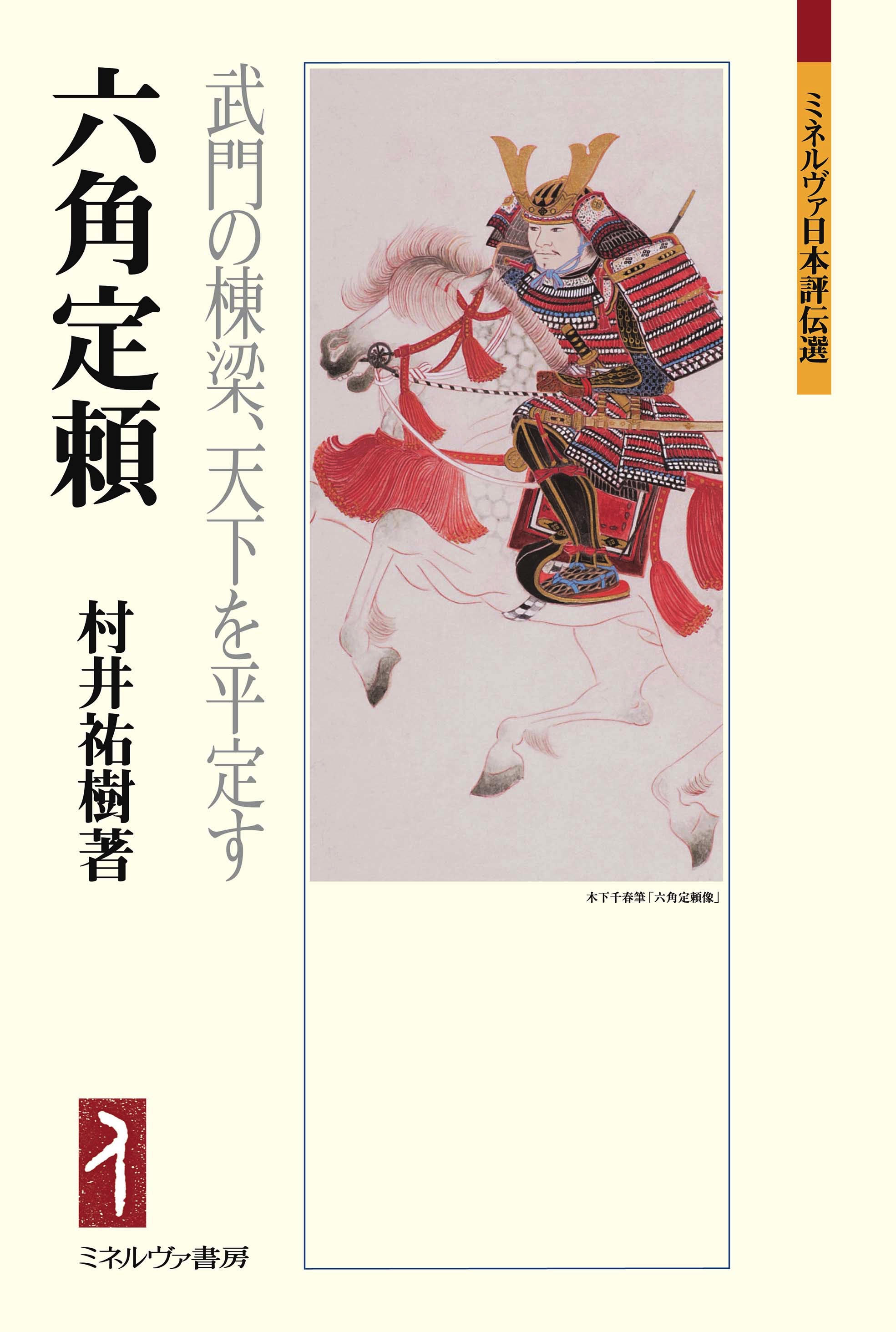
Title
Minerva Series of Critical Biographies Rokkaku Sadayori (A Military Leader Who Pacified the Realm)
Size
368 pages, 127x188mm
Language
Japanese
Released
May 10, 2019
ISBN
9784623086399
Published by
Minerva Shobo
Book Info
See Book Availability at Library
Japanese Page
Many Japanese will know of the Rokkaku family of Sengoku daimyō on account of the fact that they resisted Oda Nobunaga in Ōmi when the latter was marching on Kyoto, but were defeated and faded from historical significance. People interested in the history of the Sengoku period will know of the Rokkaku Family’s Law Code, in which the daimyō’s power was constrained by his retainers, and those who are even more knowledgeable about this period will know that the family was subjugated by the Muromachi shoguns Ashikaga Yoshihisa and Ashikaga Yoshiki and fled into the mountains of Kōka. Either way, they were a daimyō family who could be fittingly described as “weak.” Moreover, very few people will have heard of Rokkaku Sadayori, the head of the family during the Sengoku period. And even if they have, they will know only that he instituted free markets and open guilds before Nobunaga did. However, the aim of this book is to describe how Rokkaku Sadayori was “first of the realm” (tenkabito). I hope that those who think that this is ridiculous will read this book.
The main subject of this book is, of course, Rokkaku Sadayori. But in view of the fact that almost nothing is known of the Rokkaku family itself, separate chapters have been allocated to Sadayori’s father Takayori and his elder brother Ujitsuna and also to his son Yoshikata and his grandson Yoshisuke so as to provide a prehistory and posthistory of Sadayori and throw his life into better relief. Therefore, this book is in effect a series of biographies of members of the Rokkaku family during the Sengoku period.
In research on the history of the Sengoku period in recent years, the meanings of the words “realm” (tenka) and “first of the realm” (tenkabito) have been changing. It has become clear that during the Sengoku period the word tenka merely referred to several provinces in the area centred on Kyoto, and it has also been confirmed that the word tenkabito, too, did not refer to someone like Oda Nobunaga, Toyotomi Hideyoshi or Tokugawa Ieyasu who had unified the whole country, but referred to someone who defended Kyoto (i.e., the shogun) and assumed leadership of the government. In other words, it is coming to be accepted that anyone who controlled the area centred on Kyoto and was the most powerful person in the shogunate could be regarded as a tenkabito (although there are of course opposing views). If, having read this book, you form your own ideas about tenkabito, you will be able to view other historical phenomena, too, differently from in the past.
This book includes many quotations from old documents and other original sources, which may seem irksome. But the only way to hear the living voices of contemporary people is to use reliable old documents and records. I hope that this book will also be read from the perspective of how to glean concrete information from historical sources of the Sengoku period. I have made every effort to assist the reader’s understanding of the quoted passages by adding to most of them translations in modern Japanese or summaries of their contents, and so I would like readers to actually read these quotations without being put off by them and to immerse themselves in the Sengoku period, even if only through the medium of the written word. If you do so, you should be able to expect some new discoveries.
As the author, I shall be supremely happy if, by reading this book, readers will realize that there existed Sengoku daimyō with striking personalities apart from the three best-known tenkabito (Oda Nobunaga, Toyotomi Hideyoshi, and Tokugawa Ieyasu) and men like Takeda Shingen and Uesugi Kenshin.
(Written by MURAI Yuki, Associate Professor, Historiographical Institute / 2020)



 Find a book
Find a book


